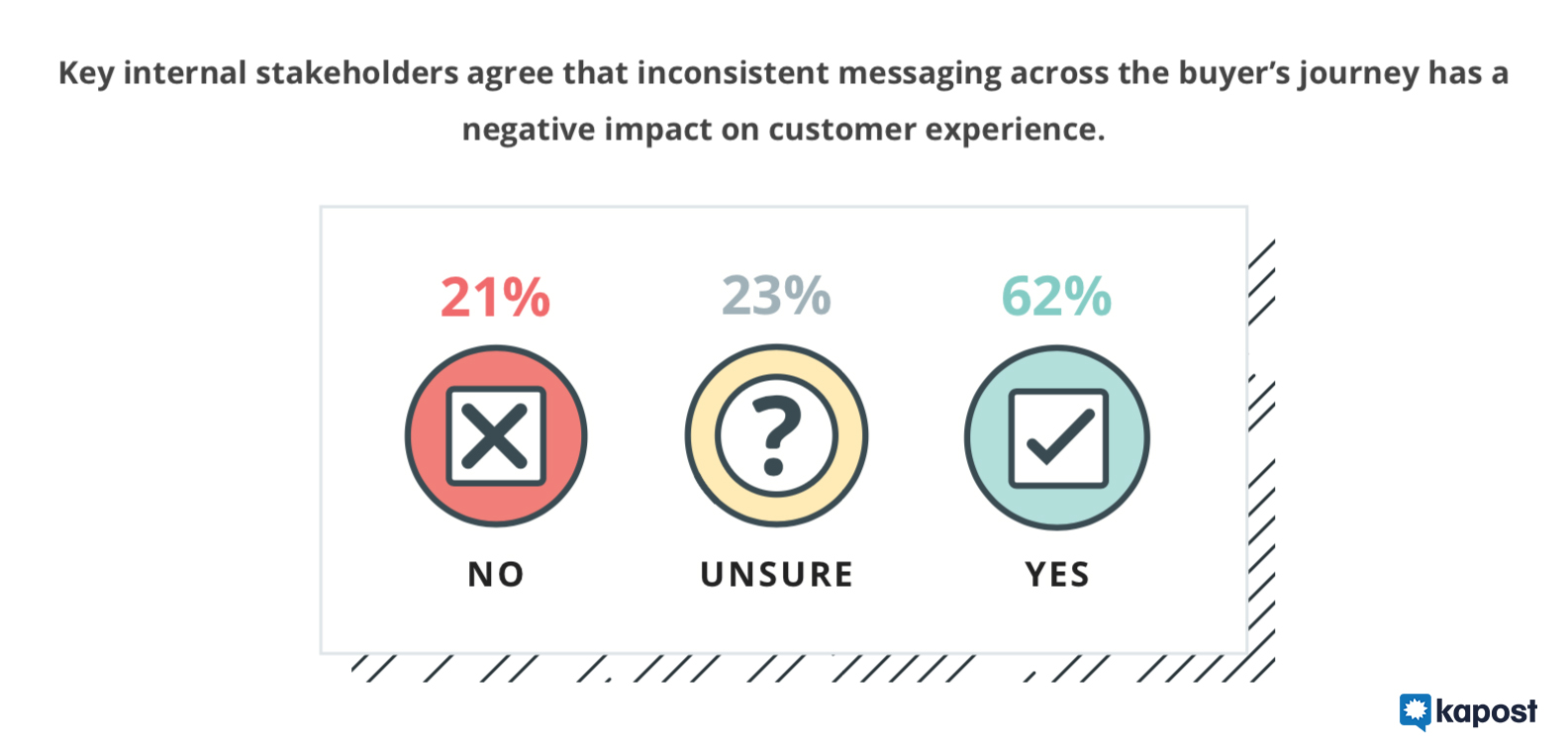Sales and marketing alignment in B2B companies is a conflict that has staying power. It’s been a topic for as long as I can remember—and I’ve been around a long time. What’s surprising to me is that, even as customers have taken control over how they buy, we still haven’t realized that we need to shift along with them.
Perhaps it’s time to look at alignment differently. What really needs to happen is alignment with our customers and markets. Instead of trying to force marketing and sales into alignment, it should occur naturally if we put customers at the core of everything we do.
As all customer-facing departments—marketing, sales, customer success, and even often product and services—set themselves to serve the customer, we naturally will align, since our aim is the same.
Consistency Is Critical
Prospects and customers don’t care or even know if you consider them to be in the marketing or sales part of their journey. What they want is relevance and a consistently valuable experience with every interaction. If your marketing and sales teams are not aligned on the story they’re sharing or if they don’t know the history of the person’s experience with your company, it’s more than likely there will be a misstep which will cost you their trust and their choice to do business with your company.
One of the first findings you see in the 2018 B2B Marketing and Sales Alignment Benchmark report from Kapost exposes confusion that needs to be resolved. While it’s good news that 62% of marketers and 61% of salespeople agree that inconsistent messaging has a negative impact on customer experience, I find it hard to believe that nearly 40% of each don’t agree. Check out the aggregate data:

I spend a lot of time interviewing salespeople and customers in the creation of buyer personas. One thing I can tell you with total certainty is that buyers choose the vendor that provides the best experience and perceived value across all touch points. Content and sales conversations that don’t share the same narrative are red flags that create concerns about how viable a partner the vendor will be.
What if you read a thought leadership piece about why and how to solve a problem but then have a conversation with a salesperson who tells a completely different story? You were bought into the content you’d read. It’s what had you agree to the sales conversation. But now you hear something that contradicts what you’d been led to believe. How’s your trust level with that vendor?
Inconsistency introduces doubt. Doubt causes confusion and uncertainty. These are the killers of purchase decisions.
Using Content to Its Full Potential Is an Acquired Skill
When asked if marketing knows what content the sales team needs, 59% of marketers said they do, but only 35% of salespeople agreed. I tend to believe the sales side when I also see that only 46% of marketers know which marketing assets are used most by the sales team. This is also likely the basis for 68% of marketers saying that salespeople don’t use content to its full potential.
My question for marketers is, have you shown salespeople how to use content to their advantage?
- Give them cheat sheets that summarize the premise and key points, who it’s for, and when to use it
- Provide them with email templates for different situations where the content would be well received by their buyers
- Create social media posts to help them build their personal brands and status within their networks and target markets by sharing useful content
Additionally, have you made sure your salespeople are aware of the nurture programs you’re running and what current prospects and customers are being exposed to? If you’ve created content to address different needs across the buying process and customer lifecycle, have you mapped it out for your salespeople so they can see how the narrative fits together?
Even better, have you asked them if the narrative you’ve created works or has gaps based on the conversations they’re having with prospects and customers?
Of course, for this to work, marketing and sales need to talk to each other. And 33% of marketing and sales teams don’t have a standing meeting. That’s a problem that can lead to disconnects far beyond using content to its full potential.
Marketing-Sales Alignment Drives Responsiveness
What I see coming, if indeed it’s not already here, is the need for even more responsiveness.
Customer expectations for the experiences they have with vendors are shifting. They want answers and information on demand. This means the better we know our prospects and customers, the faster we can respond in ways that resonate to orchestrate productive engagement.
If sales and marketing work in silos, their ability to provide continuous and valuable customer experiences diminishes. But, by working collaboratively, they can help each other to deliver the right message to the right person at the right time in the right channel—at the right velocity.
Download your copy of the 2018 B2B Marketing and Sales Alignment Benchmark to identify opportunities for improvement that will help pull your teams together. Your customers will thank you.

